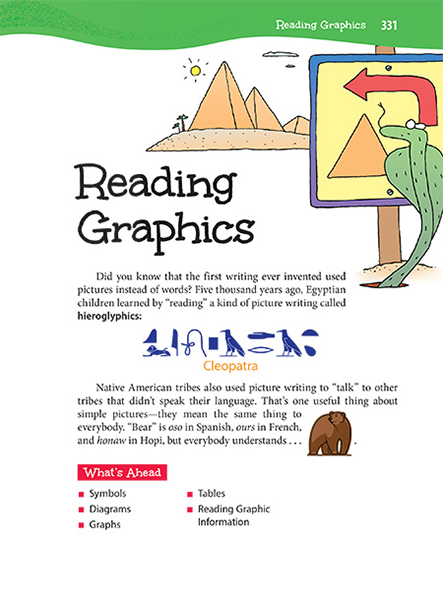Page 331 from

Start-Up Activity
Discuss with your students that one of the first forms of writing actually used pictures instead of words. More than 5,000 years ago, Egyptians used a kind of picture writing called hieroglyphics. Later, Native American tribes used picture writing to communicate with other tribes that didn't speak their language.
Display some examples of Native American pictographs for your class. Have your students create a sentence or brief story using pictographs. Afterward, ask for volunteers to present their stories. Challenge the rest of the class to figure them out.
Inform students that this chapter will teach strategies for figuring out the meaning of many different types of visual information.
Think About It
“Information presented in a graphic helps readers see patterns, relationships, and trends.”

Start-Up Activity
Discuss with your students that one of the first forms of writing actually used pictures instead of words. More than 5,000 years ago, Egyptians used a kind of picture writing called hieroglyphics. Later, Native American tribes used picture writing to communicate with other tribes that didn't speak their language.
Display some examples of Native American pictographs for your class. Have your students create a sentence or brief story using pictographs. Afterward, ask for volunteers to present their stories. Challenge the rest of the class to figure them out.
Inform students that this chapter will teach strategies for figuring out the meaning of many different types of visual information.
Think About It
“Information presented in a graphic helps readers see patterns, relationships, and trends.”

